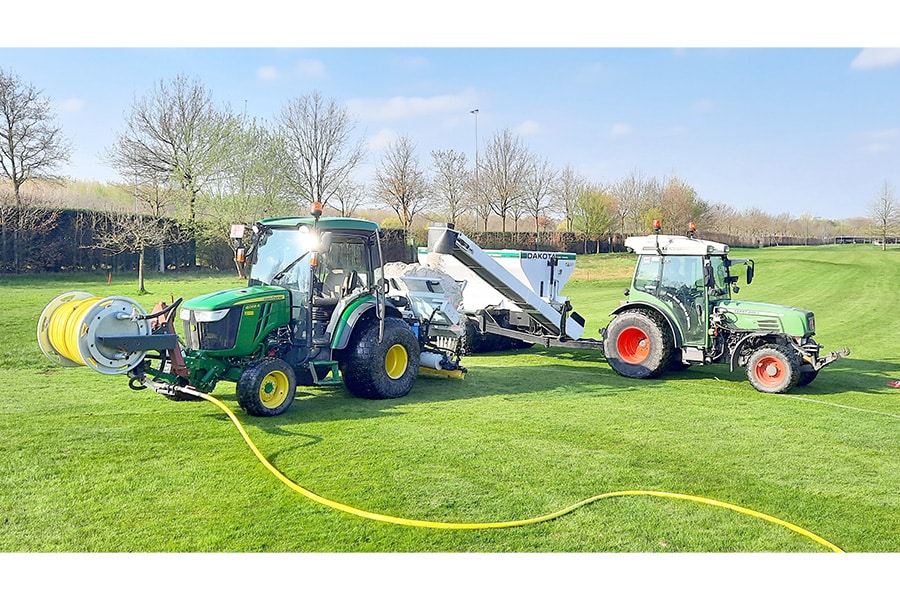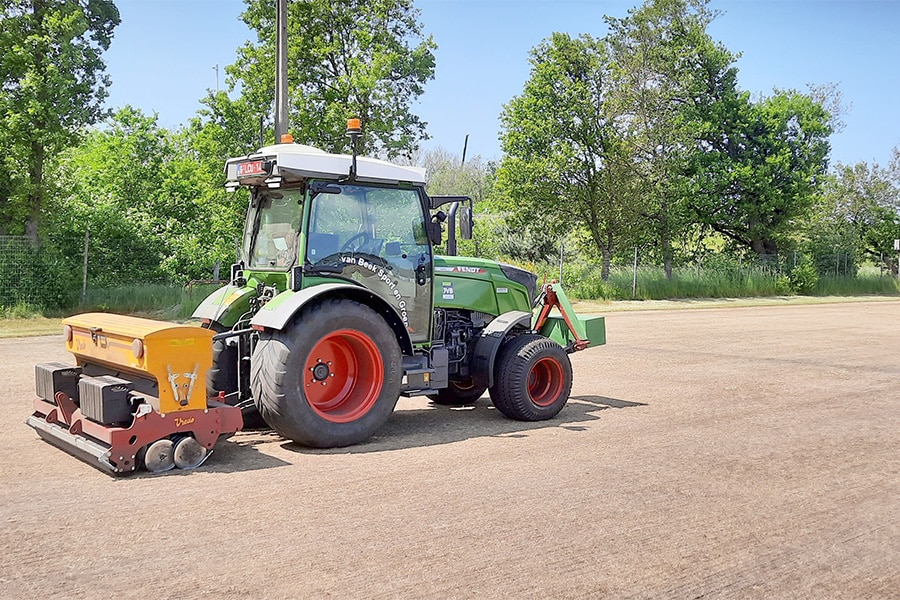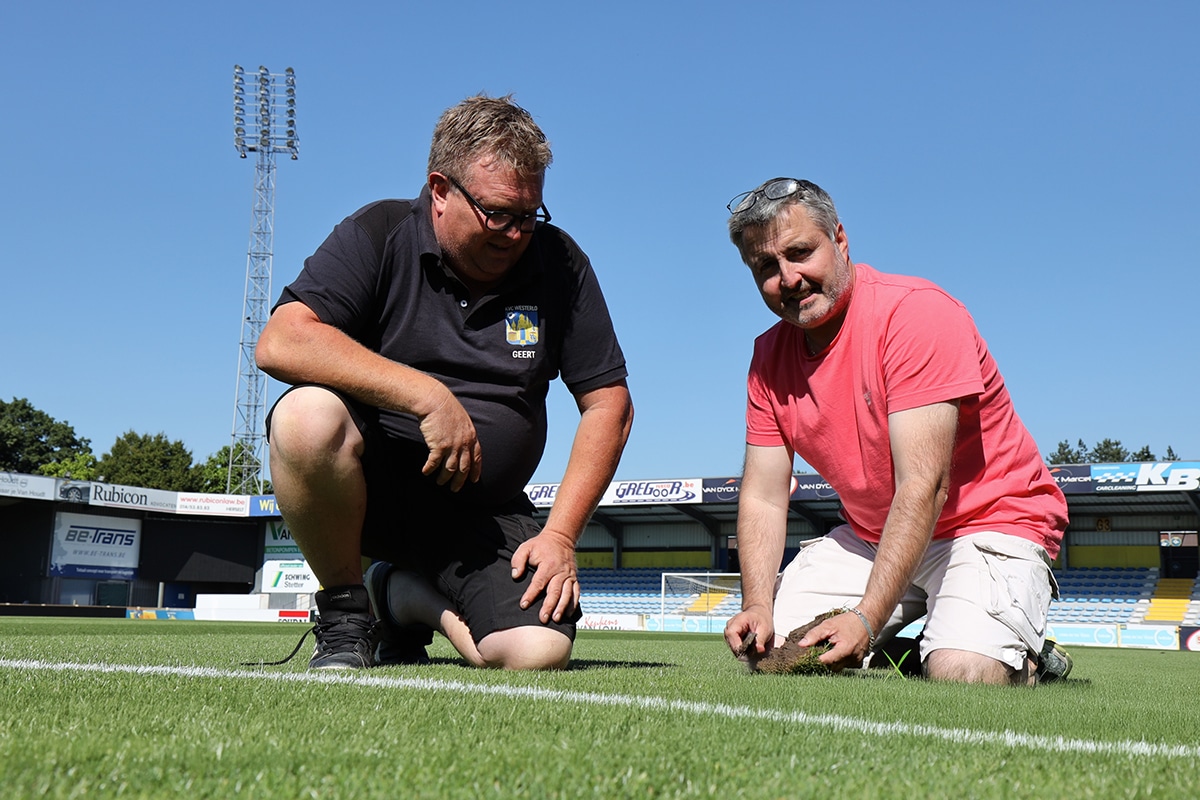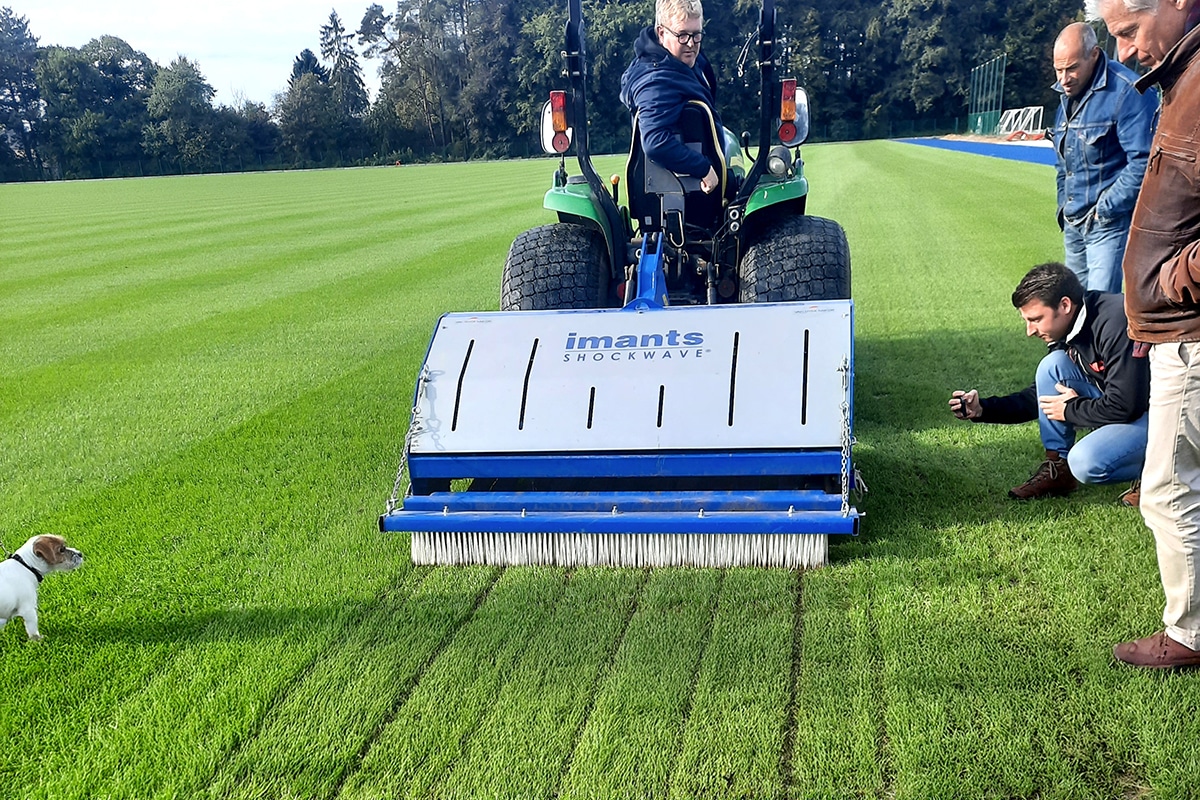
Climate-proof natural grass field starts with soil
Construction and maintenance of sports fields
Everywhere, groundsmen and greenkeepers are experiencing the impact of climate change. Even in our historically temperate climate, protecting sports fields and turf from extreme drought and ditto flooding today proves to be a tough challenge. Then let's switch to artificial turf fields, you might think. However, Joost van Beek does not agree at all. According to the manager of Van Beek Sport en Groen, not only is the playing experience on a natural grass field still unmatchable; with sufficient attention to the soil, you can also greatly increase the resilience of the turf.
Joost van Beek once enjoyed an agricultural education, and that immediately explains why he believes the soil is the central starting point when laying out sports fields. "Of course, the knowledge I acquired at school has now been greatly expanded with the necessary experience, new insights and adapted sports-technical knowledge. With Van Beek Sport en Groen we have been laying and maintaining soccer fields, jumping fields for horses and golf courses for fourteen years now. We do this for both amateur clubs and the top segment, in Belgium, the Netherlands, and Eastern Europe, among others."

The power of natural grass
In the duel between artificial turf and natural grass, Van Beek's position is already clear. "To begin with, a lot of clubs have already painfully misjudged the price tag for construction and maintenance of an artificial turf field in recent years. But much more importantly, nothing beats the playing experience and climatic and environmental benefits of natural grass. There is more cushioning, less risk of injury and burns, and you can even steer a quality natural grass field. A greenkeeper or groundsman who knows what he is doing well can perfectly give the home team an added advantage by adjusting the length of grass or by watering more or less before the game."
However, Van Beek won't deny that natural grass fields are suffering hard under climate change. "But if one takes care of the right management, uses the right grass species and varieties, bio-stimulants, fertilizers, and so on, and ensures that the plants can root properly, then a natural grass field can fortunately withstand a lot. Only, the more water use comes under pressure, so the more important it is that the soil is on point."
Soccer Fields
Specifically, every project at Van Beek starts with a thorough analysis of the composition and structure of the soil. "With professional soccer clubs, a field is of course built up layer by layer and from scratch, integrating modern technologies such as field heating, irrigation and drainage, but with amateur clubs we traditionally start from the existing soil. That is analyzed and improved and finished with a custom top layer."
"In essence, the basic needs of a grass plant are of course the same everywhere, but on soccer fields, from a sporting point of view, you must of course also ensure that excess water can be sufficiently drained away in winter. To improve water permeability, we therefore almost always incorporate a proportion of composting sand in the top layer. The exact amount depends on the soil analysis. In the underlying layers, the emphasis is on water retention, so that sufficient reserves can be used in the summer. Finally, through good management and regular overseeding and aeration, we ensure that the grass stock is maintained."

Topchanger
Van Beek swears by a long-term approach, so it should come as no surprise that quite a few clients from both the soccer and equestrian sectors also leave the maintenance of their grounds to the company.
"In the golf sector, we don't even do anything else. But we do it right the first time and with the Topchanger we have a machine of our own. Instead of pricking the greens every year and then brushing in sand from the ground, which always makes the terrain worse and bumpy for a few days anyway, the Topchanger uses water pressure to make a hole, which is then immediately filled with white sand. The sand is then brought in deeper and the green is immediately nice and smooth again. A real boost for golf clubs that used to see their reservations decline a few days after being pricked.
"In any case, whether for soccer, equestrian sports or golf, a good natural grass sports field always requires the right management, the necessary passion as well as good communication from all parties involved," Van Beek concludes.




